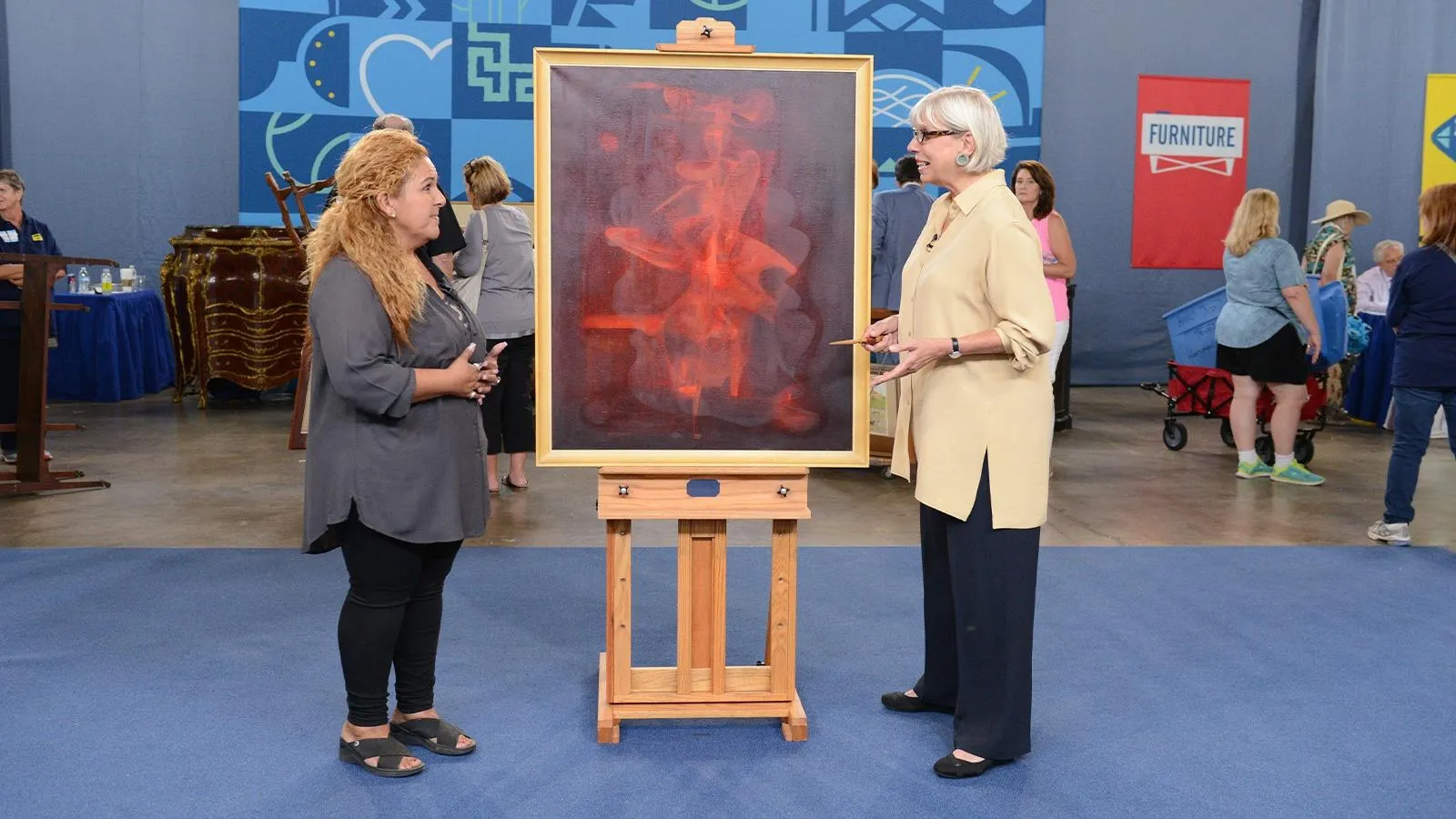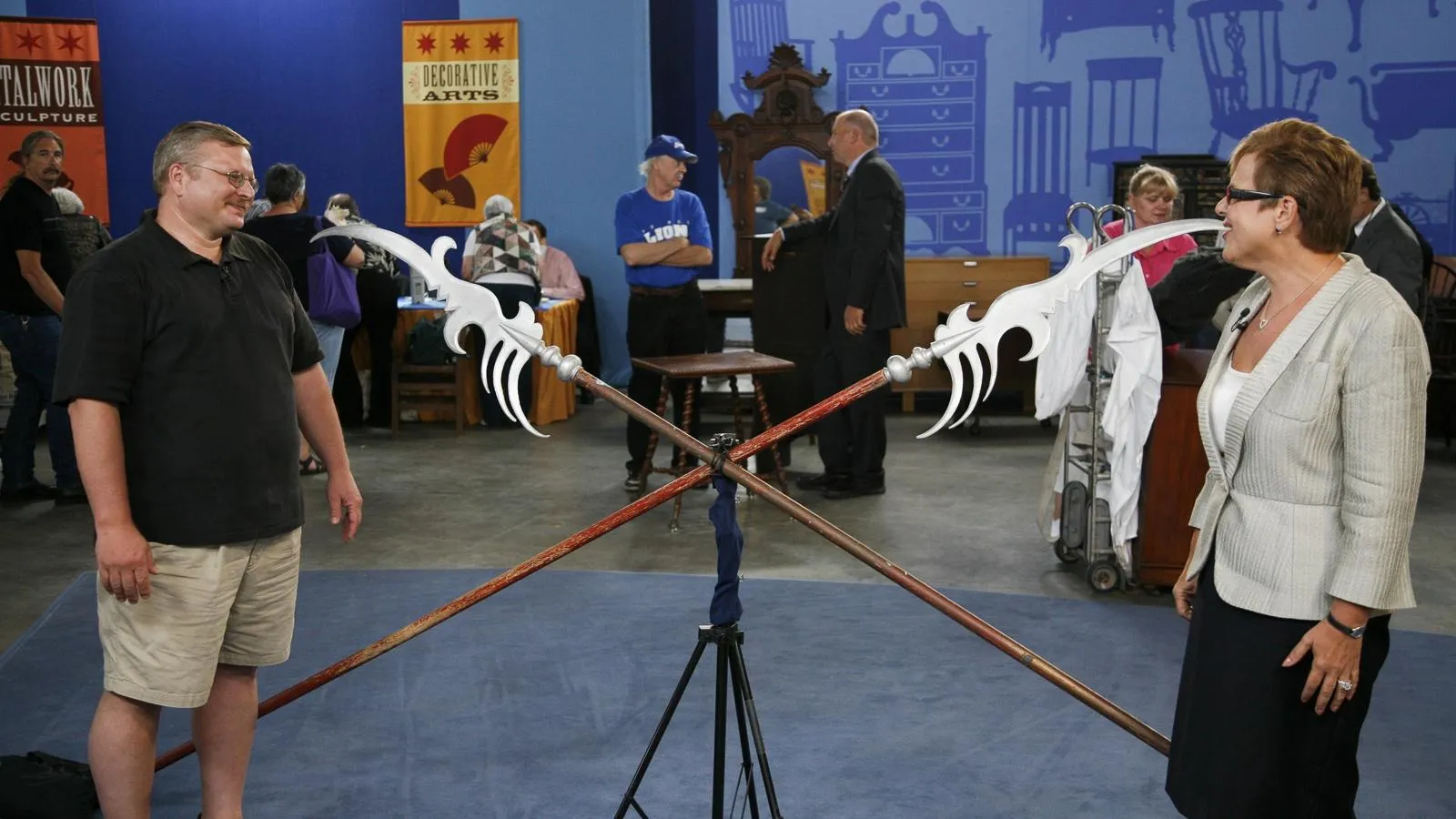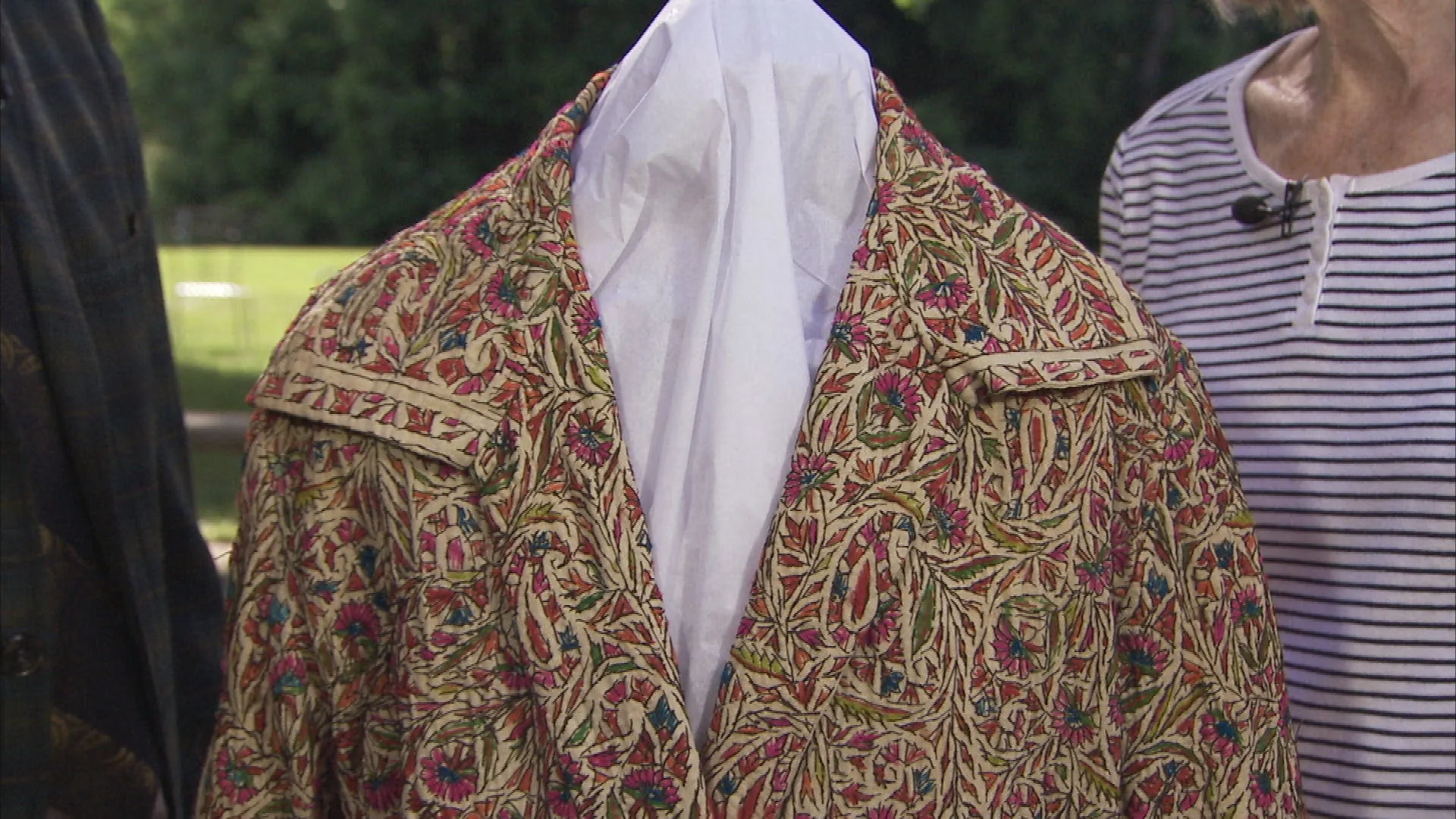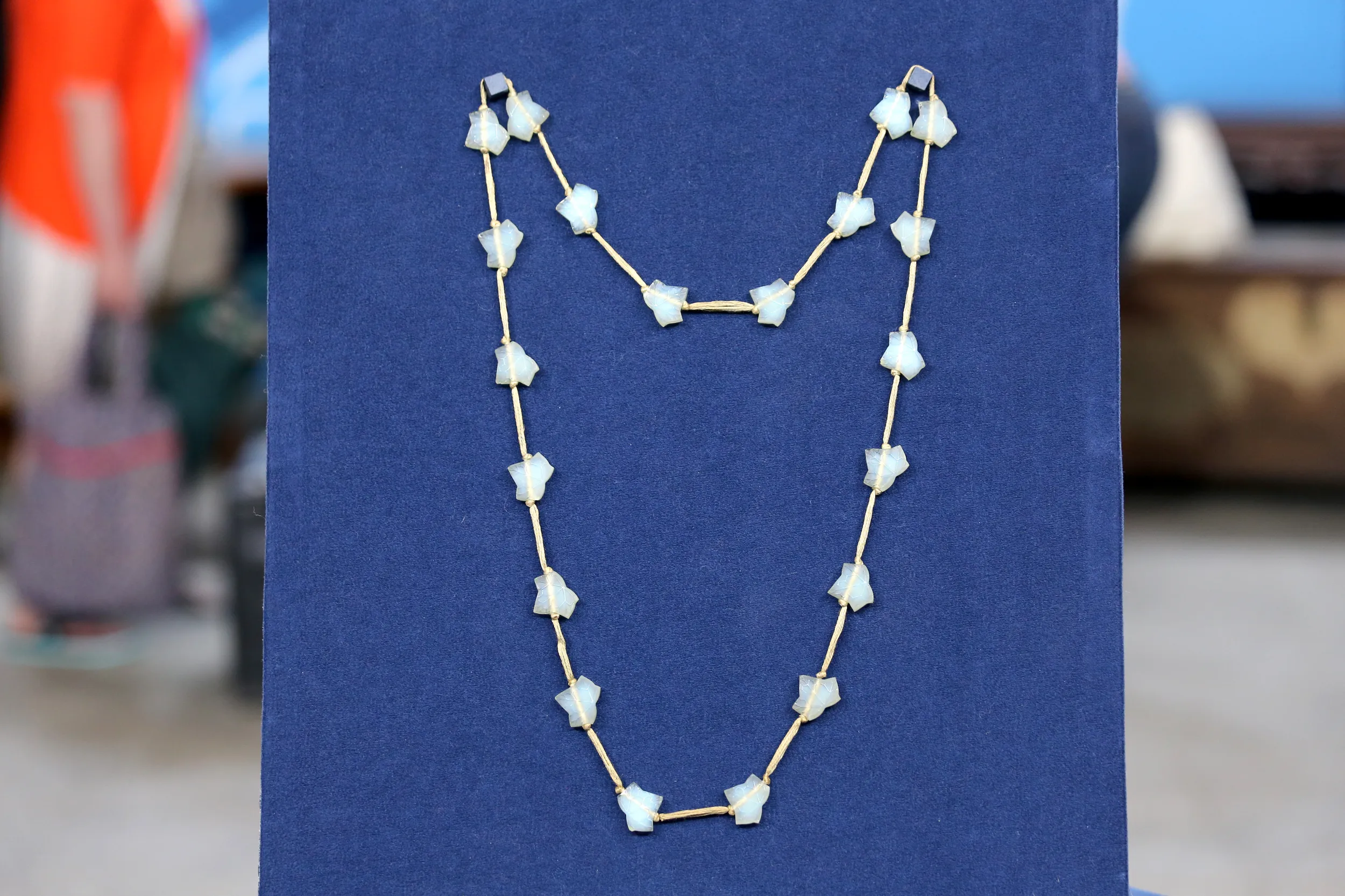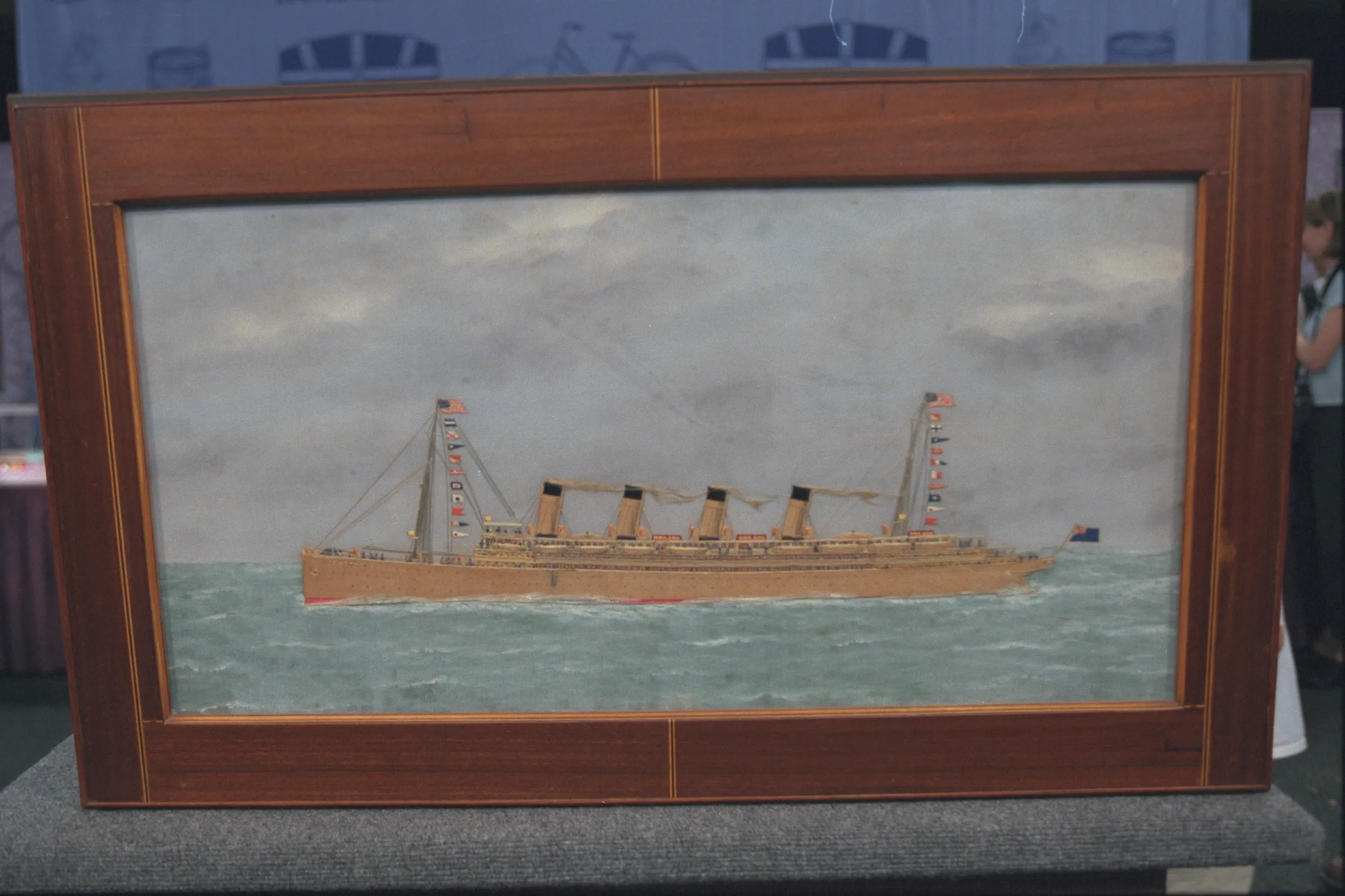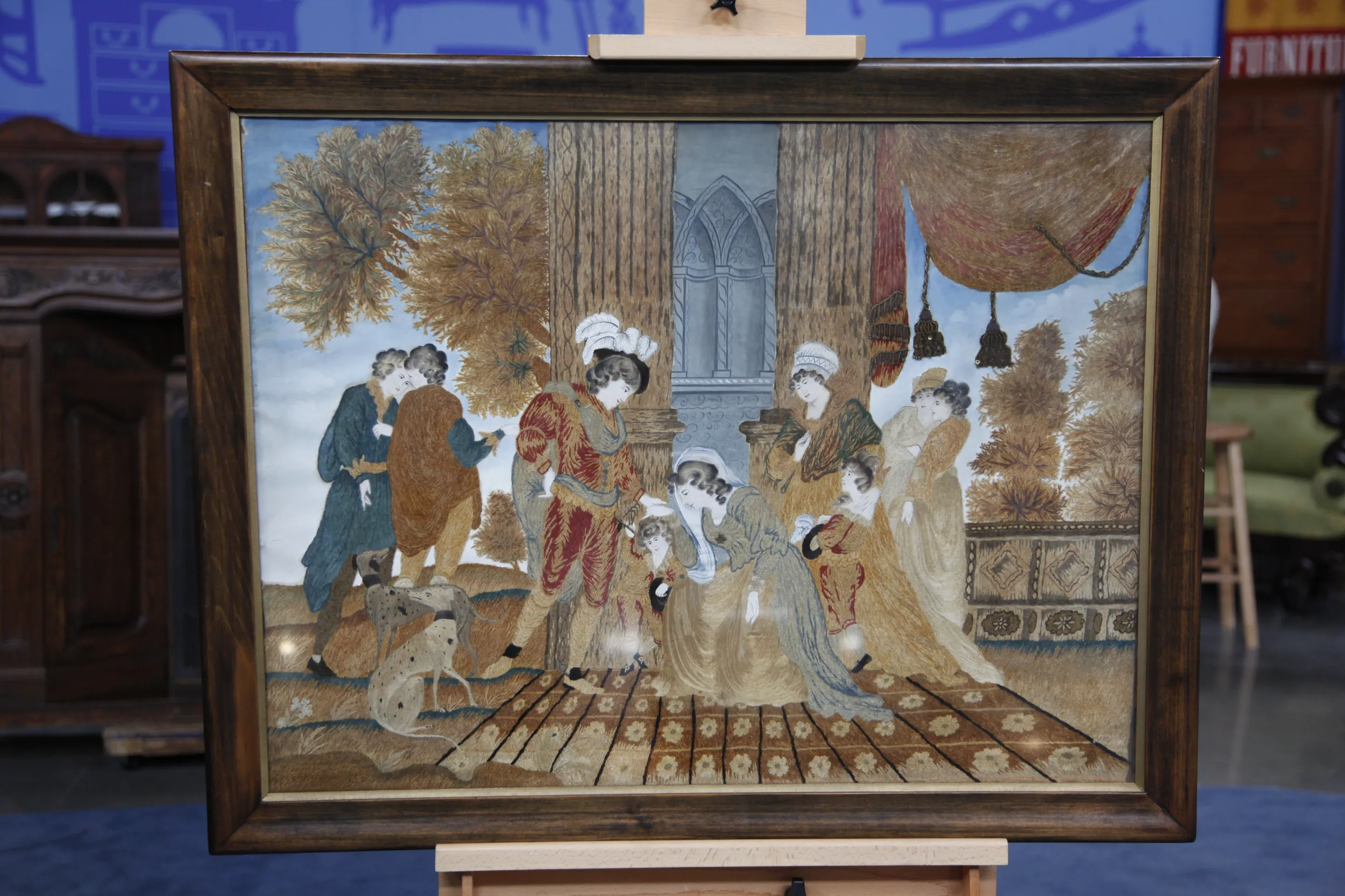GUEST: Our local art museum had a sale, and their workers could bring in items to put in the sale, as well. And it was purchased there from one of the workers then, about 30 years ago. That's how I got it.
APPRAISER: And did you know much about it when you bought it?
GUEST: Not really. I just knew a bargain when I saw one.
APPRAISER: What was your bargain?
GUEST: Ten dollars.
APPRAISER: Ten dollars. You sure that wasn't too much?
GUEST: Oh... Back then, it was a lot.
APPRAISER: Well, thi, this is a very pretty piece. It's a very finely chain-stitched, embroidered Indian textile.
GUEST: Oh, okay.
APPRAISER: And it's silk embroidery. And it's 18th century.
GUEST: All right.
APPRAISER: Most likely it was made in Gujarat, which is in Western India...
GUEST: Okay.
APPRAISER: ...and that was the province of the Mughal Empire at that time. And so we often refer to these as Mughal textiles.
GUEST: Mughal textiles.
APPRAISER: And this is the classic medallion pattern. One of the things that I really like about it is the very curvilinear, flowing aspect to the design. There's such delicacy to the way the designs are drawn and extremely fine stitching. Probably the finest I've seen of its type. Now, these pieces, the opinion is that they were inspired by Queen Anne embroideries that came into India in the early 18th century. And they very quickly started reproducing them in this technique, and they were made both for domestic consumption and for the export market. So a lot of these went to Europe, and England primarily, as coverlets or canopies.
GUEST: Okay.
APPRAISER: Now, one of the interesting aspects of this is that it's made in three pieces. Anybody who's done fine embroidery knows that you can't do a huge piece very easily.
GUEST: Right.
APPRAISER: And so here we see a seam running across the top. And look over here, where it really doesn't quite match up.
GUEST: I see that.
APPRAISER: And then over here, it really doesn't quite match up. Even though those don't quite match up, it's an extraordinary feat to be able to do those three pieces as well as they did. Now, let's talk about condition a little bit. First of all, the piece is very large. It's about 80 inches by 100 inches.
GUEST: Yes.
APPRAISER: The majority of the piece is in excellent condition. We do have a slight discoloration, here-- probably some sort of a water stain. There are also some very small holes scattered about. But it would be almost unheard of to find a piece of this age that didn't have some condition issues.
GUEST: When you say 18th, is it, like, early, middle, late?
APPRAISER: I think first half of the 18th century.
GUEST: Oh, first half!
APPRAISER: Yes.
GUEST: Ooh, okay. Whoo!
APPRAISER: Now, I would say that the value on this piece, conservatively, would be $15,000.
GUEST: (laughing) Well, color me happy. Really?
APPRAISER: And that's a, that's a retail value.
GUEST: That's awesome.
APPRAISER: The, the very best of these, when they're in excellent condition with no problems, bring $25,000 to $30,000.
GUEST: Wow.
APPRAISER: It's a special piece, really.
GUEST: (exhales) Well, it's even more special now. (laughs)

